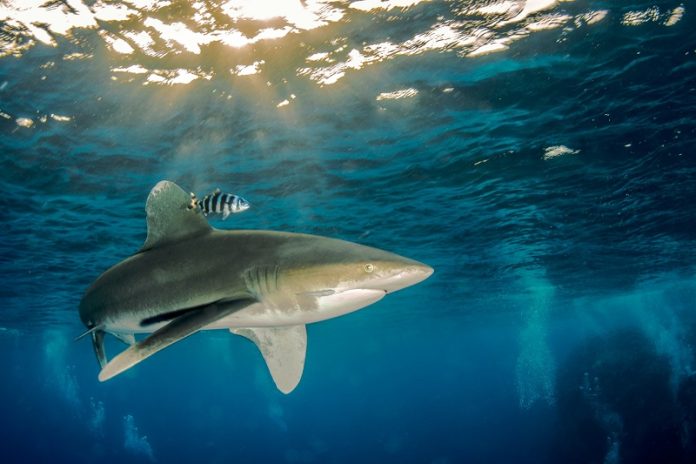
A recent study has uncovered fascinating details about the ancient food chain from millions of years ago, thanks to the discovery of a prehistoric sea cow that was attacked by two different predators—a crocodile and a shark.
This rare find gives us a glimpse into the predation tactics of ancient creatures and how the food chain worked during the Early to Middle Miocene epoch, which lasted from 23 million to 11.6 million years ago.
The study, published in the Journal of Vertebrate Paleontology, is one of the few examples where scientists have found evidence of a single animal being attacked by two predators from this time period.
The sea cow, known as a dugongine and belonging to the extinct genus Culebratherium, lived in what is now northwestern Venezuela. The evidence suggests that it was first attacked by an ancient crocodile and later scavenged by a tiger shark (Galeocerdo aduncus).
The discovery of the sea cow’s skeleton, which includes a partial skull and 18 vertebrae, was made in the Agua Clara Formation, a geological site south of the city of Coro in Venezuela.
This site is known for its excellent preservation of fossils, which allowed researchers to uncover details of the sea cow’s violent end.
According to the researchers, the sea cow first fell prey to a crocodile, which likely attacked it by grabbing its snout in an attempt to suffocate it. Deep tooth marks found on the snout of the sea cow support this theory.
The crocodile then dragged its prey and tore into it, as indicated by large incisions on the fossil. The striation and slashing marks on the bones suggest that the crocodile performed a “death roll,” a behavior still seen in modern crocodiles when they try to subdue their prey.
After the crocodile’s attack, a tiger shark scavenged the sea cow’s remains. The presence of a shark tooth near the sea cow’s neck, along with bite marks on various parts of the skeleton, confirms that the shark fed on the carcass after the initial attack.
The team of scientists, which included experts from the University of Zurich, the Natural History Museum of Los Angeles County, and Venezuelan institutes, believes that this discovery highlights the role of sea cows in the prehistoric food chain.
Lead author Aldo Benites-Palomino, from the Department of Paleontology at Zurich, explained that while evidence of ancient food chains exists in fossil records, it is rare to find such clear examples of multiple predators attacking the same prey.
The findings suggest that, much like today, prehistoric food chains were complex, with carcasses serving as food sources for multiple predators. Previously, the researchers had identified sperm whales that were scavenged by several species of sharks. This new study adds sea cows to the list of important prey animals in the ancient ecosystem.
The discovery of the sea cow’s skeleton was described as “remarkable” by co-author Professor Marcelo R. Sanchez-Villagra, especially because it was found in a site 100 kilometers away from previous fossil finds. The site was first brought to the team’s attention by a local farmer who noticed unusual rocks.
After several visits to the site and months of careful excavation and preparation, the researchers were able to reveal the story of the sea cow’s dramatic end.
This study not only sheds light on the predation tactics of ancient crocodiles and sharks but also provides valuable insights into the complex food chains of the Miocene epoch, helping us better understand the dynamics of prehistoric ecosystems.
Source: Taylor & Francis.



